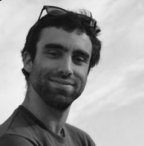Roswitha Schmickl (Principal investigator) I initially came to Czech Republic as a postdoctoral researcher of Jan Suda. I did my Ph.D. in plant evolutionary biology in the group of Marcus Koch at the University of Heidelberg, and an internship in the lab of Aaron Liston at Oregon State University during my postdoc was the final trigger for me to set up my own research team, supported by the PRIMUS Research Programme of Charles University. My lab is interested in why (not) and how differentiation and diversity originate, establish and keep maintained in natural populations and across plant groups. We work on whole genome duplication, hybridization and cytogenomic processes as potential drivers of differentiation and diversity. The model systems of our research are radiating plant groups of various age, mainly southern African Oxalis and the genus Arabidopsis, but also tropical-alpine Asteraceae, the Campanula rotundifolia agg. and Rosaceae subtribe Malinae. We test our hypotheses using genomic methods (Hyb-Seq, genome sequencing, RADseq), which we combine with flow cytometry, cytology, morphometrics, and ecological experiments. A strong focus of my lab is phylogenomics. We use hundreds of single-copy nuclear markers and plastid genomes to generate highly resolved phylogenies of radiating groups. We utilize the Hyb-Seq approach, which is a combination of target enrichment and genome skimming, and we gained a strong expertise in probe design, wet lab procedure and data analysis. My lab drives novel ways of Hyb-Seq data analysis forward, including the challenge of whole genome multiplication and hybridity, and we are currently expanding the application of Hyb-Seq towards the population level. |
 |
Tomáš Urfus (Researcher) My research interests are linked to flow cytometry and its applications (ploidy level, absolute genome size, reproductive modes, and methodological optimizations). I am especially interested in biosystematics of polyploid and agamic groups (genera Aster, Azorella, Cystopteris, Elymus, Dactylorhiza, Oxalis, Pilosella, Sorbus and Urtica) and microevolutionary aspects of hybridization (genera Diphasiastrum and Prunus). |
 |
Martha Kandziora (Independent researcher) Is it easier to move or to evolve? This question fascinates me and drives my research on plant lineages. I currently focus on two different topics: 1) using phylogenetics and comparative methods to understand the biogeography and diversification of lineages, and 2) bridging the gap between botany and bioinformatics - producing tools that enable me and others to analyze big datasets in a reproducible manner. |
Vojtěch Zeisek (Postdoctoral researcher) I am interested in historical aspects of evolution, as depicted in phylogeny, phylogeography and population genetics. I wonder which processes on population level are responsible for species delimitation and evolutionary changes. I am also interested in the methodological (mainly computational) background of the methods answering my questions. |
 |
Kristýna Šemberová (Ph.D. student) I have always been fascinated by the enormous variation in plant morphological characters and by plant adaptability, especially their ability to survive under harsh conditions. Furthermore, I am interested in polyploidization, specifically the impact of whole genome duplication on the evolutionary trajectory of plant species, and I also want to know if evolution can repeat itself. The Campanula rotundifolia agg., a polyploid complex, represents a suitable model system to study the role of whole genome duplication in a radiating plant group and allows testing for parallel evolution of a polyploid high-altitude morphotype. In my research I use a combination of intense field sampling, flow cytometry, morphometrics, ecological experiments and RADseq genotyping. |
 |
Jakub Hojka (Ph.D. student) I am interested in evolutionary patterns and processes related to polyploidy and introgression. My research focuses on the origin of polyploids (of southern African Oxalis), polytopic polyploid origins (of Arabidopsis lyrata) and diversification across hybrid zones (mainly a hybrid zone between Arabidopsis arenosa and A. lyrata in the eastern Austrian Forealps). Methodologically I combine extensive field sampling, flow cytometric ploidy estimation and genome size analysis, morphometrics, and genotyping using RADseq and genome sequencing. |
 |
Juan Manuel Gorospe (Ph.D. student) I am most interested in the evolutionary history of plants and the processes responsible for current biodiversity patterns. My work focuses on the understanding of evolutionary processes across different spatio-temporal scales, using phylogenetic, biogeographic, phylogeographic and ecological approaches. Currently, I am studying the origin and development of tropical-alpine radiations within Asteraceae lineages. |
 |
Temporary visitors
Roman Ufimov (Postdoctoral researcher; Komarov Botanical Institute, Saint Petersburg & Bundesforschungszentrum für Wald, Vienna) The taxonomy of Crataegus L. (Maleae, Rosaceae) and related genera is the scope of my research. In my work I approach the well-known “problems” of taxonomically complex taxa with a wide spectrum of methods: I combine my knowledge about hawthorns with studies on morphology, nomenclature, ecology, and geography, and I use the power of phylo- and cytogenomic techniques to reach a true understanding of their diversity and relationships. I plan to expand the experience I am gaining with Crataegus to other “difficult” genera and, generally, want to find means of depicting nature in the most accurate manner. |
 |
| Soňa Píšová (Postdoctoral researcher; Bundesforschungszentrum für Wald, Vienna) |
 |
| Fabian Bratzel (Independent researcher) |
Former lab members and associates
| Kenneth Oberlander (Researcher; now University of Pretoria) |
| Eliška Záveská (Postdoctoral researcher; now University of Innsbruck) |
| Soňa Píšová (Scientific lab technician; now Bundesforschungszentrum für Wald, Vienna) |
| Magdalena Bohutínská (Master student; now Charles University in Prague) |
 |
Magdalena Folbrová (Master student) I am studying the morphological variability within the Campanula rotundifolia agg., a polyploid complex; I wonder about the reasons behind the huge phenotypic plasticity in members of this species complex. I focus on extremely variable endemic mountain taxa in Central Europe. I like hiking in the mountains and looking for interesting changes in morphological traits of my favourite plant. My studies also include the cultivation of plants under different conditions, which is often quite a fight (I guess I am a specialist in fighting with slugs), but the results are worth it. |
 |
